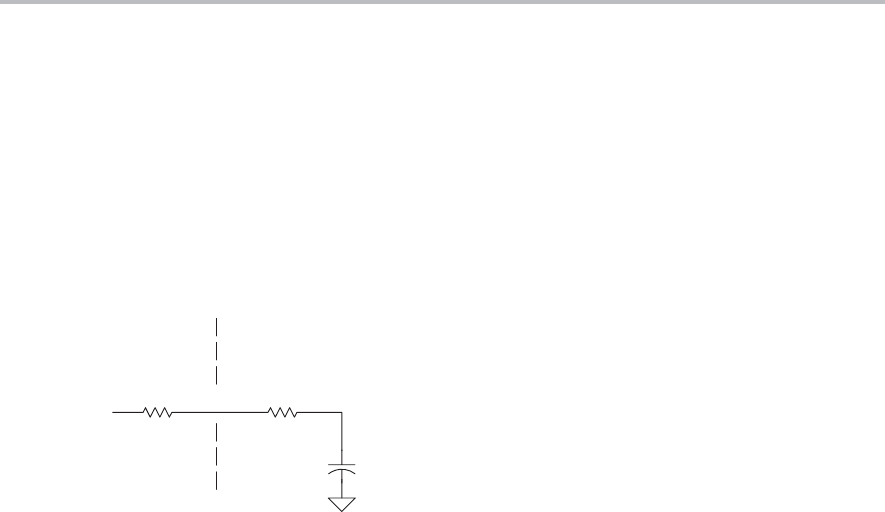
ADC10 Operation
18-8
ADC10
Sample Timing Considerations
When SAMPCON = 0 all Ax inputs are high impedance. When SAMPCON =
1, the selected Ax input can be modeled as an RC low-pass filter during the
sampling time t
sample
, as shown below in Figure 18−4. An internal MUX-on
input resistance R
I
(max. 2 kΩ) in series with capacitor C
I
(max. 20 pF) is seen
by the source. The capacitor C
I
voltage V
C
must be charged to within ½ LSB
of the source voltage V
S
for an accurate 10-bit conversion.
Figure 18−4. Analog Input Equivalent Circuit
R
S
R
I
V
S
V
C
MSP430
C
I
V
I
V
I
= Input voltage at pin Ax
V
S
= External source voltage
R
S
= External source resistance
R
I
= Internal MUX-on input resistance
C
I
= Input capacitance
V
C
= Capacitance-charging voltage
The resistance of the source R
S
and R
I
affect t
sample
.The following equations
can be used to calculate the minimum sampling time t
sample
for a 10-bit
conversion.
When ADC10SR = 0:
t
sample
u (R
S
) R
I
) ln(2
11
) C
I
) 800ns
When ADC10SR = 1:
t
sample
u (R
S
) R
I
) ln(2
11
) C
I
) 2.5ms
Substituting the values for R
I
and C
I
given above, the equation becomes:
t
sample
u (R
S
) 2k) 7.625 20pF ) 800ns
(ADC10SR = 0)
t
sample
u (R
S
) 2k) 7.625 20pF ) 2.5ms
(ADC10SR = 1)
For example, if R
S
is 10 kΩ, t
sample
must be greater than 2.63 µs when
ADC10SR = 0, or 4.33
µs when ADC10SR = 1.
